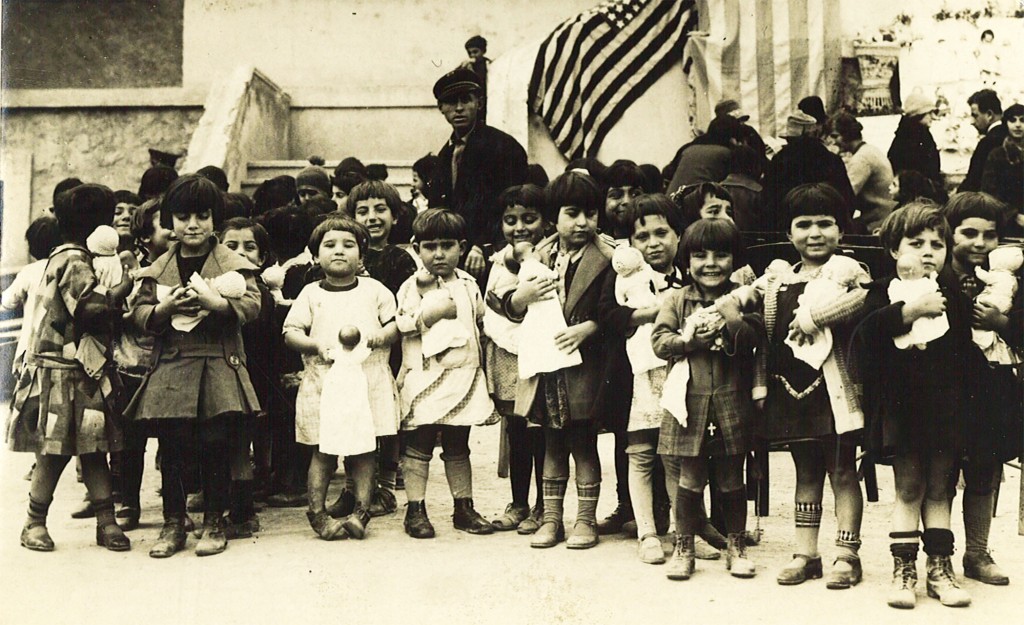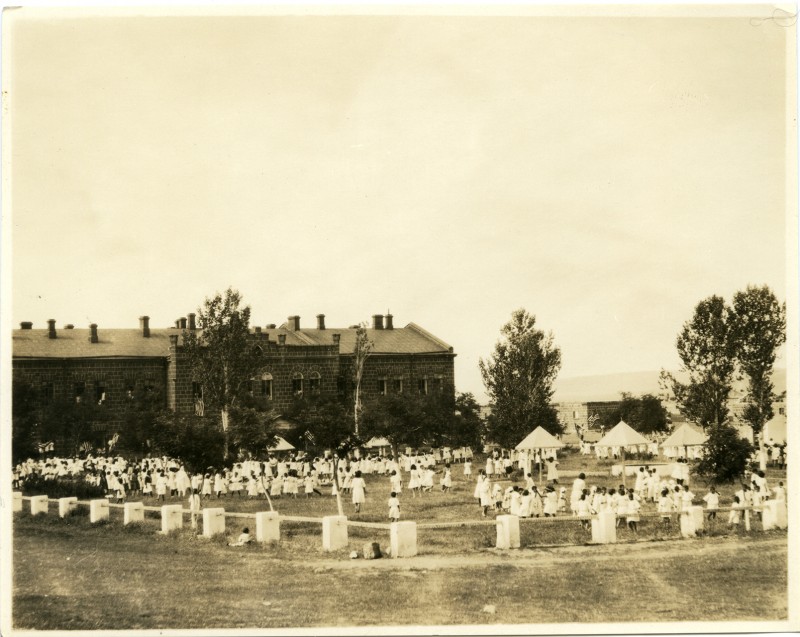Mass Entertainment: An Exploration of Toys and Games in Near East Relief Orphanages
When Near East Relief began the daunting task of caring for the tens of thousands of children left orphaned by the Armenian, Assyrian, and Anatolian Greek Genocide, the vast majority of the relief worker’s attention was given to necessities, such as food, clothing, and shelter. However, it quickly became clear that in order to ensure that the children were able to cope with past trauma and develop socially, other needs like organized play and entertainment were just as critical.

Children hold dolls received as a donations from well-wishers in America, c. 1927.
Although citizens from other countries, particularly the United States, were extraordinarily generous in their donations of clothing, food, and medicine to Near East Relief, gifts of toys and games were harder to come across, and even harder to share with the thousands of orphaned children who needed them. Still, there are several recorded instances of children in Near East Relief orphanages receiving donations of dolls and other toys that were shared amongst the younger orphans.

The orphanage at Alexandropol, home to over 22,000 orphans at its peak, had an especially daunting task trying to fill the children’s days with not only practical skills lessons and vocational training, but also finding creative ways to entertain them. Games that got the children outside and running around served the dual purpose of exposing them to much needed fresh air, but also encouraging exercise and physical activity that promoted health. When the weather allowed for it, the children that were well enough were sent outside to spend their free time, often playing games or participating in pre-structured activities.
More often than not the children had to rely on their own creativity and the companionship of their fellow orphans as a way to entertain themselves, resulting in images that are not dissimilar to what one might see from children today.
Image Right: Children playing outside at the Alexandropol Orphanage, date unknown.

Girls practicing gymnastics in the Alexandropol Orphanage yard, c. 1920.

Children playing in the snow at the Alexandropol Orphanage, date unknown.

Even when the children were supposed to be learning, they often found ways to make toys and games out of their studies. Gardening, a popular way to teach children valuable skills while also providing for the orphanages, was also often the perfect excuse for them to play around in the mud and dirt. At Alexandropol, the gardens were filled little mud houses and play areas.
Image Left: An older girl watches a young boy build a mud house in the gardens at Alexandropol, date unknown.

A boy bends to inspect a small house built from mud bricks in the garden at Alexandropol, date unknown.
For the older children, much of their time was spent in their vocational classes or actually working, but for the younger children toys were critical for allowing to feel a sense of normalcy in their already tragic early years.
At some orphanages, the efforts to teach older boys vocational skills directly result in the creation of toy for the younger children. At the Birds’ Nest Orphanage in Sidon, the boys at the neighboring Maameltein Orphanage made push carts for the children to use, giving both the older boys practice in developing a skill that would serve them well outside of their lives in the orphanage, as well as giving a much needed and appreciated gift to the most vulnerable members of the Armenian, Assyrian, and Anatolian Greek communities.

Children at the Birds’ Nest Orphanage play with trikes made by the older boys at the Maameltein Orphanage, c. 1924.

Even with the donations from abroad and the toys made by older orphans, relief workers still faced a shortage. The orphans themselves often would try and make their own toys out of the materials available to them, such as metal scraps, pieces of wood, and spare fabric, resulting in little shops that sold them to the general population and made money for the orphanages.
Image Right: This orphan boy of Beirut has undertaken with his jack knife to overcome the almost complete scarcity of toys in Near East Relief Orphanages, c. 1922.
Ultimately, Near East Relief, while limited greatly by resources and the types of donations it received, did everything in its power to ensure that the children in its care were cared for in every way imaginable, including providing them with what toys they could as well as the opportunity to explore their own creativity and expression in the form of games, physical activity, building, art, music, and so much more.

An outdoor music lesson at Alexandropol. The boys are playing long-necked lutes, or saz, an ancient Central Asian instrument, date unknown.
